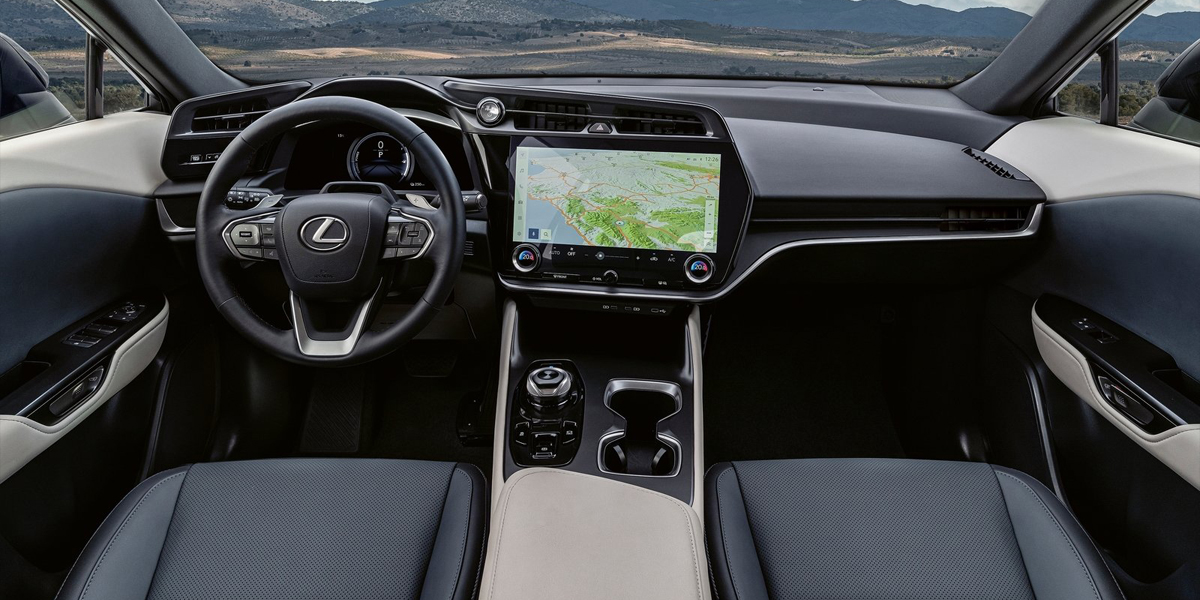Most cars use air conditioning to cool the air and a radiator to warm it up. These actions are sometimes achieved through circulating hot water or by electrically heating a coil in what is sometimes called a radiant heating system.
These systems heat the air which then transfers the heat onto the passengers or other objects in the car. With traditional ICE cars, this way of warming works well and makes use of heat that would have otherwise gone to waste.
However, with EVs, these warming techniques aren’t the most efficient solutions available because heat is being taken away from the car’s battery. Most modern electric vehicles will use a heat pump instead to help maximise their electric ranges.

RZ 450e radiant heating system
Lexus has gone a step beyond heat pumps by installing a radiant heating system on their latest RZ 450e model.
Their radiant heating system increases efficiency by heating passengers and objects directly instead of just warming the surrounding air. This is similar to how the sun directly warms the planet but not the surrounding air, which is instead warmed by heat radiating from the Earth’s surface.
Radiant heating is very efficient and less energy consuming than convection heating. Lexus has installed this tech onto its electric crossover to warm front occupants via panels under the dashboard. Infrared radiation heats an object in its line of sight.
The surface temperature of the panels is reduced to 43 degrees Celsius to prevent occupants from burning themselves if they accidentally make contact.
The radiant heat panels can warm people in the car quicker than a conventional heating system all whilst using 8% less energy. The Japanese carmaker compares the feeling of the heat to a ‘warm blanket’ that’s placed around your legs.
The new technology will be included in the RZ Premium Plus Pack and the RZ Takumi specifications.
ZF heated seatbelts
New tech company ZF believe that their new heated seatbelt technology can increase an EV's range by up to 15% in cold weather. The technology will be used alongside heated seats and steering wheels to warm up motorists through direct contact.
The slightly thicker belts have specialised webbing woven through the straps that help to provide temperatures between 36-40 degrees Celsius. ZF says “the heated belt is designed to provide occupants with a uniform feeling of warmth close to the body”.
The heated belts will still work in the exact same way as standard seatbelts and will be just as safe. So far, no manufacturers have signed on to use the new heating technology.
Conclusion
Both these new technologies from Lexus and ZF have a human-centred approach that makes sure that energy is being used directly on the passengers in the car and not the surrounding environment.
Multi-zone climate control systems ensure that car interiors only deliver heat to areas where there are passengers seated to ensure that no energy is wasted and that everyone is subjected to optimum comfort.
With the car industry switching to electric, you can expect other manufacturers to take up these types of technologies in the coming years to ensure their cars have the most competitive electric ranges on the market.








